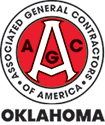AGCOK has assembled general guidance and links to information from our federal agency partners and health organizations. AGCOK will continue to monitor the situation and update the information on this page accordingly.
What is COVID-19?
Coronaviruses are a large family of viruses that are common in people and many different species of animals, including camels, cattle, cats, and bats. Rarely, animal coronaviruses can infect people and then spread between people such as with MERS-CoV(link is external), SARS-CoV(link is external), and now with this new virus (named SARS-CoV-2). The virus that causes COVID-19 is spreading from person-to-person in China and some limited person-to-person transmission has been reported in countries outside China, including the United States. However, respiratory illnesses like seasonal flu, are currently widespread in many US communities.
Symptoms of COVID-19
Reported illnesses have ranged from mild symptoms to severe illness and death for confirmed coronavirus disease 2019 (COVID-19) cases. Symptoms may appear 2-14 days after exposure*:
- Fever
- Cough
- Shortness of breath
*This is based on what has been seen previously as the incubation period of MERS(link is external)-CoV viruses.
Call your healthcare professional if you develop symptoms, and have been in close contact with a person known to have COVID-19 or if you have recently traveled from an area with widespread or onging community spread of COVID-19.
What Should Employers Do?
The Center for Disease Control and Prevention (CDC) is encouraging businesses to begin preparations for the spread of the Coronavirus in the United States. In order to assist you in these preparations, you are encouraged to take the following steps:
- Educate your employees
- What You Need to Know About the Coronavirus(link is external)
- What To Do When You Are Sick(link is external)
- Hygiene and health is key - Practicing standard sanitation and hygiene regimens is a top priority.
- Encourage frequent and thorough hand washing with soap and water Hand Washing Guidance(link is external).
- Hand sanitizer, with at least 60% alcohol content, is a secondary option.
- Remind everyone to keep noses and mouths covered when coughing or sneezing Coughing and Sneezing Etiquette(link is external).
- Avoid touching in and around the eyes, with unwashed hands.
- Everyone who has not yet had a flu shot should get one as soon as possible.
- Follow the CDC recommendations for employers:
- Employer Guidance: PREPARE NOW(link is external).
- Emphasize staying home when sick, respiratory etiquette, and hand hygiene by all employees.
- Perform routine environmental cleaning.
- Update your absenteeism policy and communicate the requirements.
- Update your work from home policy and communicate the requirements.
- Planning Considerations
- Prepare for increased absenteeism
- Cross train employees to handle other functions
- Encourage employees to develop contingency plans for child care in the event there are long term closures of schools and day care centers
- Prepare for business interruption
- Identify alternative suppliers
- Prioritize certain customers
- Prepare to shut down certain functions
- Prepare for increased absenteeism
